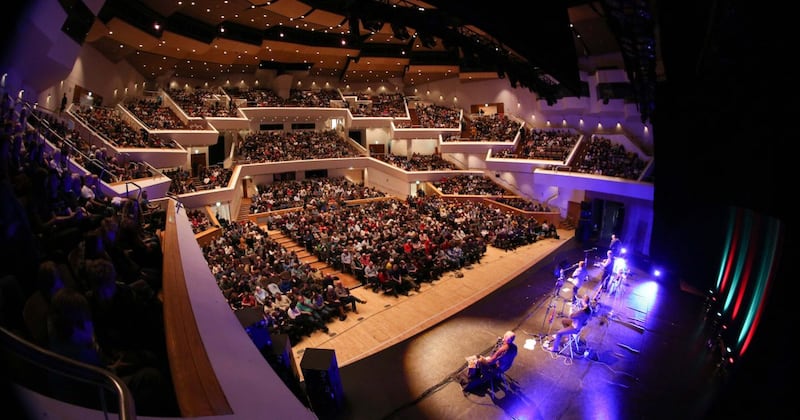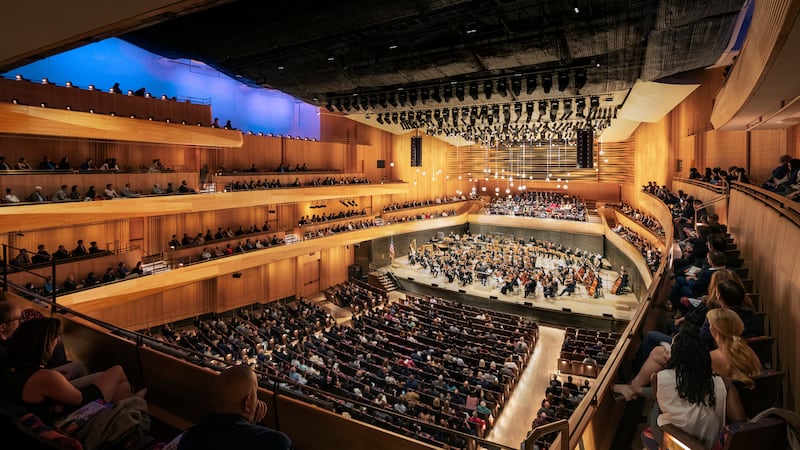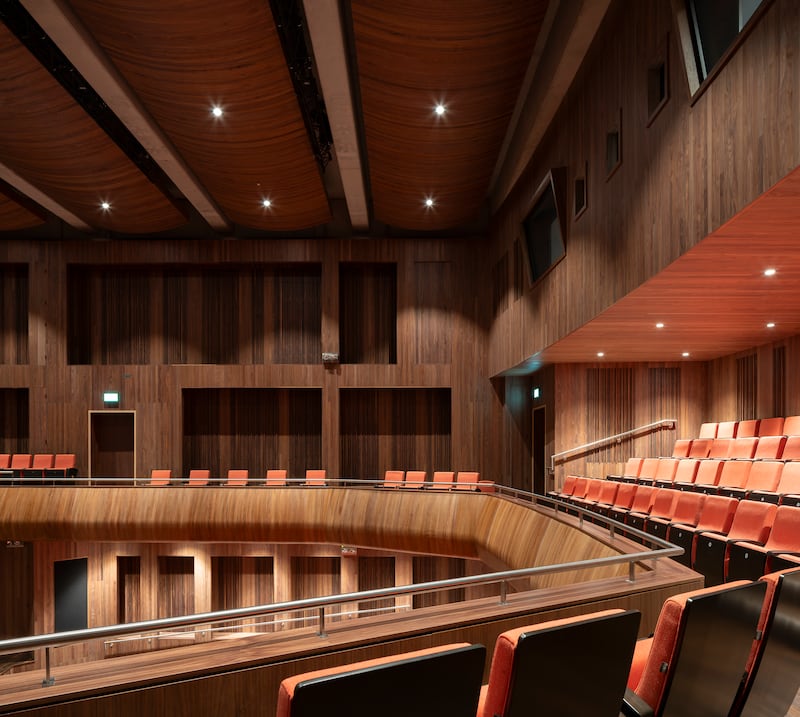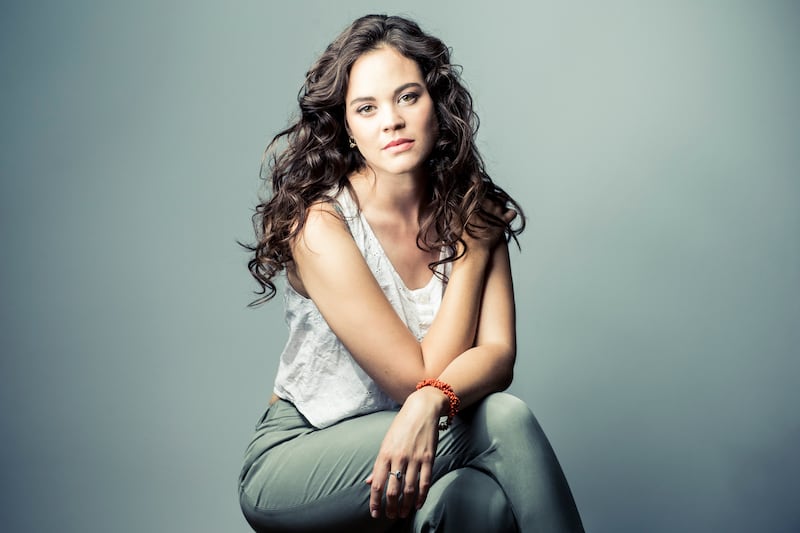RIAM Wigmore Hall Festival
Whyte Recital Hall
What you want from concert halls is a bit like what you want from the instrument panels and driver controls of your car. You really want not to notice them. When that’s the case they’re seamlessly integrated and deliver exactly what you need.
This applies not just to the acoustics, seating and sightlines of a hall but also to the facilities front and back of house, from clear signage and readable seat numbering to loos and refreshments. I’lI never forget hearing the 99-year-old Elliott Carter show his alertness in a public interview by joking about the yellow painted lines that help people negotiate their way around the Barbican, in London. And seat numbers in many auditoriums are still a regular cause of confusion.
It is extraordinary what you will find designed into halls. Belfast’s Waterfront Hall, opened in 1997, sounds so different from different seats that people discussing what they have been listening to can appear to be talking about different concerts. “The horns were too loud,” says one. “I could hardly hear them at all, says another.” The first time I went to a preperformance interview there, the only place available was one end of an upstairs bar.

University Concert Hall, in Limerick, looks like an oversized lecture theatre that doubles as a concert space. That, of course, is exactly what it is. And for years after it opened, in 1993, concerts were plagued with squeaks from seating that had clearly never been designed for use in a music venue.
READ MORE
The muted mauve colour scheme of the Curtis Auditorium, which opened at MTU Cork School of Music in 2007, is peculiarly off-putting, so clinically dull that it always makes me feel as if the light is being sucked out of the building. The sound is rather better, and the venue has been used for recordings by the pianist Barry Douglas.
Of course all of these halls offer creature comforts that don’t feature in the many churches and other spaces where concerts have been and continue to be given. Some of the effects I’ve come across are almost unbelievably weird.
At an orchestral concert in the Examination Hall of Trinity College Dublin, I once heard the orchestral horns, which were in front of me, sounding from my left. There was an undamped, reflective surface behind the players, whose instruments project their sound to the rear. The reflected sound reached one of the large portraits on the left wall, and made its way to me.
There are similar issues to be found in St Ann’s Church on Dawson Street, where, in the wrong seat, you can radically change the perspective of what you hear. All you have to do is move your head a couple of inches either way.

There are venues where the experience is good for performers but not so good for the audience. And vice versa. It can also good for both or good for neither. A singer recently described their experience on the stage of Dublin’s Gaiety Theatre as being “like singing into a sock”.
An oboe-playing friend who worked as a deputy in the New York Philharmonic Orchestra at Lincoln Center said it was virtually impossible to hear what anyone else on the stage was actually doing. The main auditorium, now named the Wu Tsai Theater, has had many makeovers, which took its capacity from 2,658 first to 2,836, then 2,726 and, after the latest, $500 million refit, to 2,200. It is part of the complex now known as David Geffen Hall, after its major benefactor, the billionaire movie magnate.

Where does the Royal Irish Academy of Music’s new Whyte Recital Hall fit into all of this? Well, more than twice over into the difference between David Geffen Hall in 1962 and in 2023. But a 300-seat venue in Dublin’s city centre has the potential to be a real boon for promoters of the kind of events that now take place in the National Concert Hall’s John Field Room, which is actually nothing more than a foyer with chairs and a movable platform.
The entrance area to Whyte Recital Hall, through the academy’s main Westland Row frontage, is a utilitarian route to an attractive, comfortable space with good sightlines, wood-clad walls and lighting that is cleverly designed to deliver a darkened space that unobtrusively also manages to provide enough lighting for people to consult their programmes or follow sung texts with relative ease.
It has its quirks. At the opening concert, someone who didn’t seem to be an academy official prevented audience members getting out at the interval, while the pianist Mitsuko Uchida scurried to get into a lift. Yes. The backstage area connects with the dressingrooms through a lift opposite the audience entrance to the ground-floor seating. The adjustable acoustic, I have been told, has so far been heard its most reverberant setting. The only available option is to make the sound even drier.

The sound at the four concerts of the opening Wigmore Hall Festival that I attended was anything but consistent. It is on the dry side, but without even the immediacy of the John Field Room. I sat in the centre of row F downstairs for the duo concert by the British cellist Sheku Kanneh-Mason and the Brazilian guitarist Plínio Fernandes. The sound was remote, the cello tone peculiarly anaemic, often surpassed by the colour and warmth of the guitar which, at the same time, it readily overpowered.
I sat in side seats in the balcony for the pianist Stephen Hough’s beautifully conceived and delivered programme that ranged from the intimacy of Mompou to the exoticism of Scriabin and the fire of Liszt. Tonally, the experience was of an instrument with plenty of colour (that, of course, is a Hough speciality) but limited presence at low volume and sharp projection under pressure. There were similar, almost black-and-white contrasts in the opening piano-duet concert by Mitsuko Uchida and Jonathan Biss, but the sound upstairs was that bit more open.

For the final concert, a song recital by the Swiss soprano Regula Mühlemann and the Russian pianist Tatiana Korsunskaya, I was seated in the second row of the main balcony. Here the attractively light and agile singing of songs by Schubert, Strauss, Argento and Bridge was counterparted by full-on, rich and varied piano playing in a way that somehow always stayed in perfect balance.
There may be problems, but there are also reasons to be optimistic.












